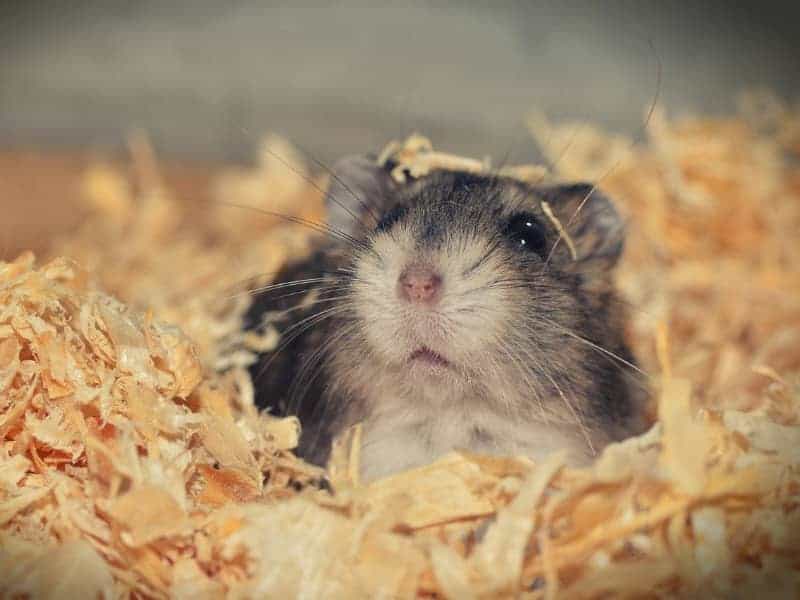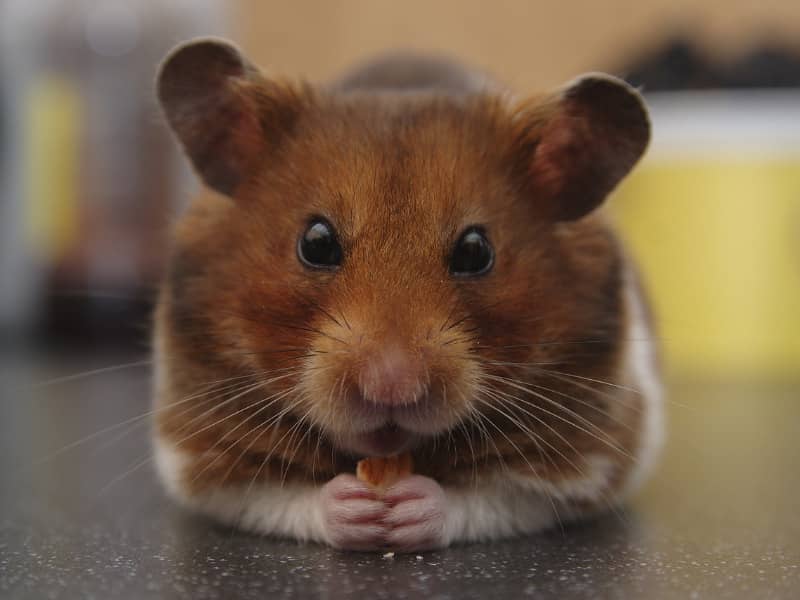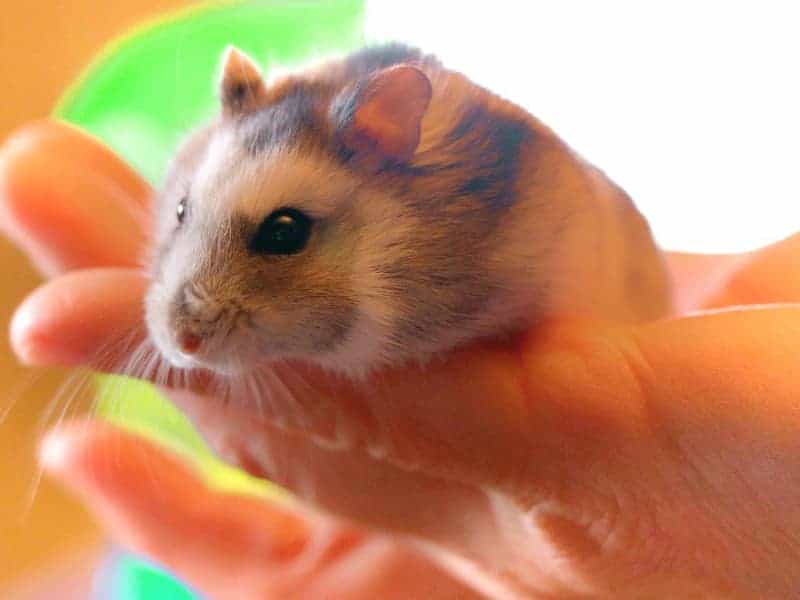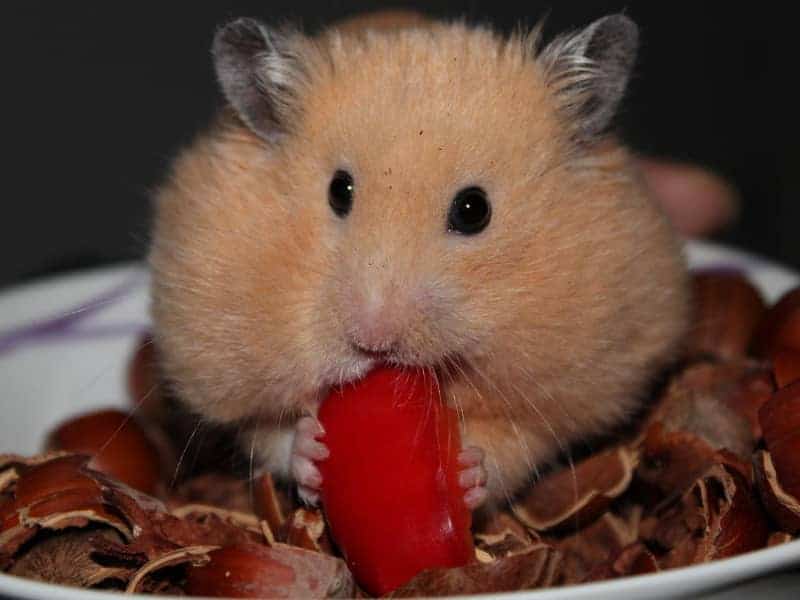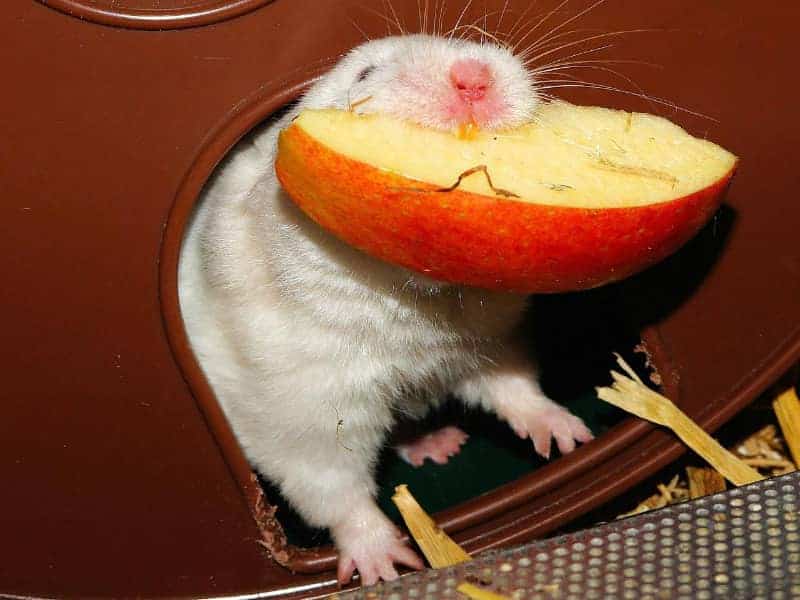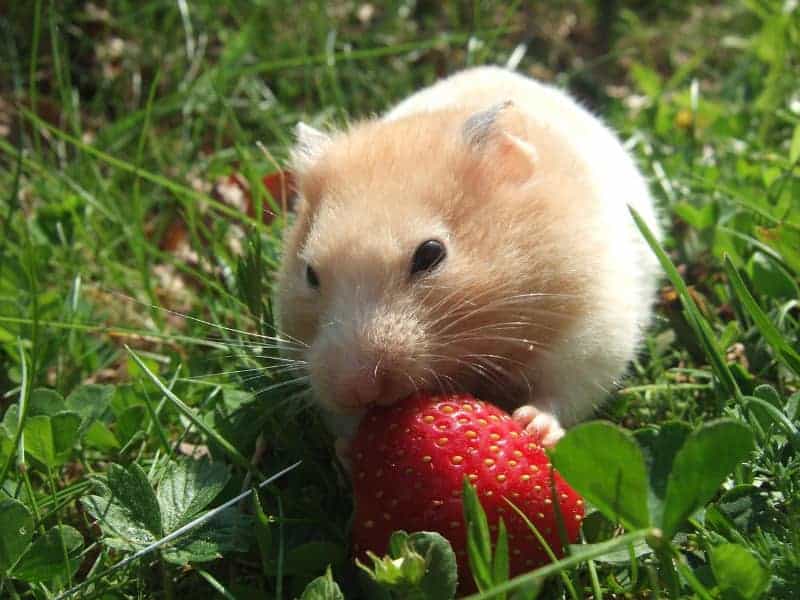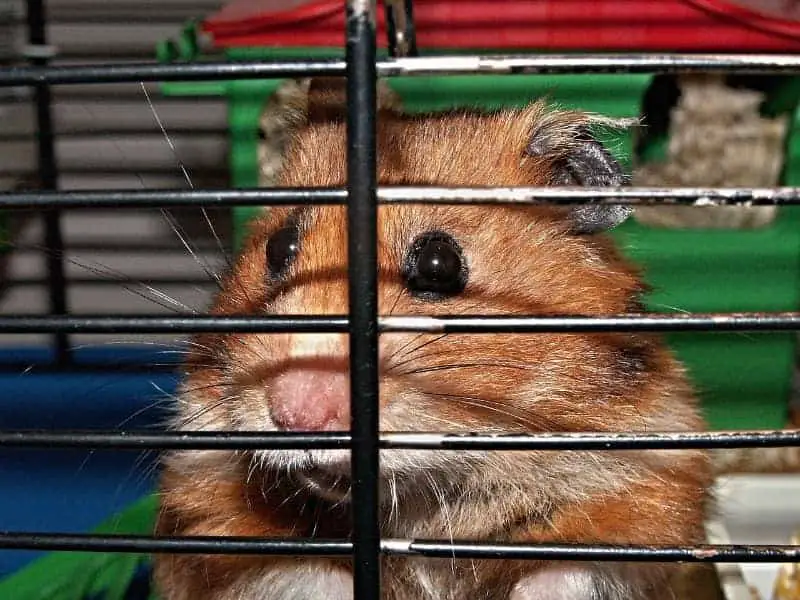
Hamster nibbles the cage
Again and again it happens that hamsters gnaw or nibble on the bars of their cage. The reasons for this are many and we would like to list them one by one. However, we don't want to stop at just listing them, we also want to give you solutions on how to prevent your hamster from nibbling on the cage. Because often small changes are already sufficient, so that your hamster changes his behavior.
A cage is not ideal for keeping hamsters
First of all, we would like to point out that animals should be kept as species-appropriate as possible. That this is sometimes difficult with a hamster, that we do not want to question. Because in the wild, a hamster covers large distances in one night in search of food. This can be compensated in a house / cage only about the well-known wheel.
The cages that are available in stores, have some disadvantages. Among them is that they are almost always too small, or have several floors. This is nice to look at, but has nothing to do with the original environment of the hamster. Hamsters, in principle, feel comfortable only on the ground. They are not used to having to look down through bars from a certain height.
In view of this, a terrarium or aquarium with a footprint of at least 1 m² is a much better solution. In these "vessels" can be filled with a high bedding of at least 30 cm. In it, the hamster can dig, just as he would do in the wild. In addition, a few toys and platforms that are not higher than 15 cm. In our opinion, this is the best way to keep a hamster.
But since not everyone has the money and the possibilities and often cages are already available, we still want to give you advice on how to prevent nibbling on the bars.
Hamster nibbles the cage - the most common reasons
The reasons listed here do not necessarily have to fit your hamster. Often it is a combination of different factors, which you can eliminate little by little in the elimination process.
Cage too small
As described above, a hamster needs a floor space of about 1 m². Smaller hamster breeds, which are classified as dwarf hamsters, can usually manage with 0.8 m² of floor space. Another problem with cages is that often no high cushion of bedding can be filled. This is due to the design and therefore a problem. In such a case, the hamster is usually underemployed and therefore nibbles on the bars.
A short-term solution is to allow the hamster a certain amount of exercise in the apartment, primarily at night. Here, however, care must be taken that the hamster can move only in the area where there is nothing dangerous for him. So no cables and things that he can knock over. In the long term should be switched to a large terrarium.
Teeth need to be shortened
Hamsters are rodents and have teeth that grow back throughout their lives. Accordingly, these teeth must be ground down by chewing or gnawing. If the animals have no objects or possibilities to do this, then they start to gnaw and nibble on all kinds of objects to grind down their teeth.
Accordingly, use the bars to shorten their teeth. This behavior can be prevented by giving wood. The following types of wood, preferably in the form of branches, can be placed in the hamster cage.
- Walnut
- Apple tree
- Pear tree
- Beech
- Birch
- Poplar
- Hazelnut
- Linden
Please use only these woods that we have listed here. Other types often have too high an acid content and can cause health problems for the hamster. It doesn't matter if the branches are fresh or dried, your hamster will be happy about any activity.
Stressful situations encourage nibbling on the cage
Normally, a hamster lives in a quiet and sometimes almost silent environment. Therefore, loud noises, such as vacuum cleaners, screaming children or other pets lurking outside his apartment, are a great stress factor for the hamster. Likewise, constant street noise during the day is one of the things that is not good for a hamster's psyche.
In such stressful situations hamsters try to nibble on something to relieve the stress. This also includes the bars and some of the fellows, really start to riot if they do not get any rest. Here you should quickly find a solution to create an environment for the hamster, where he has more peace.
Get curiosity and attention
Hamsters are anything but stupid. In addition, they are curious and learn to quickly understand relationships. In terms of curiosity, some hamsters may shimmy up the bars to get a better view. In doing so, they hold onto the bars with their teeth and it may then be gnawing on the bars for some owners.
If this only happens occasionally, then it is completely unproblematic. Another point that hamsters like to exploit is when they realize that they have to gnaw on the bars to get attention from you as the owner, they will do so. Especially if you have specific feeding times, this behavior can be very pronounced. I nibble on the bars, then someone comes and gives me food.
A solution to this is difficult to implement because it is a conditioning that you and your hamster have engaged in. He nibbles, you give him attention and possibly food. If this behavior can not be stopped by a constantly filled food bowl and of course sufficient water, then we can only recommend you to buy a terrarium to keep your hamster in it.
Boredom the most likely reason why a hamster gnaws on the bars.
Hamsters are sometimes hyperactive and should you not have enough employment opportunities, then they do all sorts of nonsense. Unfortunately, this also includes gnawing on the bars. But also other things in the hamster enclosure are then no longer safe from them. So they also once dismantle a running wheel, which is made of wood and also their housing is not safe from them.
The solution here is also a species-appropriate hamster enclosure, with a floor space of at least 1 m². Bedding that is high enough so that your hamster can dig and many hiding places and mazes that he can explore and discover every day. Only then will you have a balanced and happy animal that has a high life expectancy.
Mating season and sex drive
Except for the mating season, almost all hamster species are solitary. However, if it is mating season, then look for a suitable partner to reproduce. During this time, the sex drive may cause the hamster to bite the bars out of desperation to get out of its cage and look for a mate.
Unfortunately we cannot offer a solution here, unless you want to start a hamster breeding.
Can a hamster gnaw through a wire mesh bar?
The hamster has an extremely strong bite, but it is not possible for him to bite through a rod made of metal. However, this is different with wood, plastic and thin wire mesh.
Is nibbling on bars dangerous?
Yes, nibbling on the bars is not safe for the hamsters. This is because the metal bars are harder than the dentition and therefore damage can occur. Here is a small list of the possible dangers.
- Teeth breaking
- Cracks in the teeth
- Injuries to the oral cavity and jaw
- Misalignments of the teeth
- Absorption of toxic substances from the metal sheathing
Hamster nibbles the cage - Conclusion
If you have read our article carefully, then one factor is mainly decisive, that is the boredom and underemployment that a hamster has. It is important here to ensure that a species-appropriate environment is created with as much space as possible. Another important point is the rest that a hamster needs in its resting phases.
If you have considered all these points, then we are sure that your hamster will rarely or never nibble on the cage.
Author

-
Garden animal - A life with nature
Welcome to my animal blog! My name is Dirk and I am happy to take you on my journey through the fascinating world of animals and gardening.
Born 54 years ago, I have had an insatiable curiosity for the animal world around me since childhood. Although I have moved professionally in other industries, my true passion has always been animals and nature. It is remarkable how a small garden has become such an important part of my life.
Many of my fondest memories are associated with the animals that share our home. Whether it's the curious squirrels that scurry across the trees in the morning, the colorful variety of birds that visit our feeders, or the busy bees and butterflies that pollinate our flowers, every moment with them is invaluable to me.
This blog is my contribution to share my experiences, discoveries and insights with like-minded people. Here I will share stories of unforgettable encounters with animals, give tips on gardening and creating wildlife-friendly habitats, and take you on my journeys through nature.
Thank you so much for being here!
Cordial,
Dirk aka garden animal
Last posts
- 27. February 2024PetsVeganes Hundefutter – Grün und Gesund?
- 18. January 2024ChickensOregano für Hühner
- November 27, 2023HamsterDiurnal hamsters
- November 24, 2023HamsterHamster hammock

